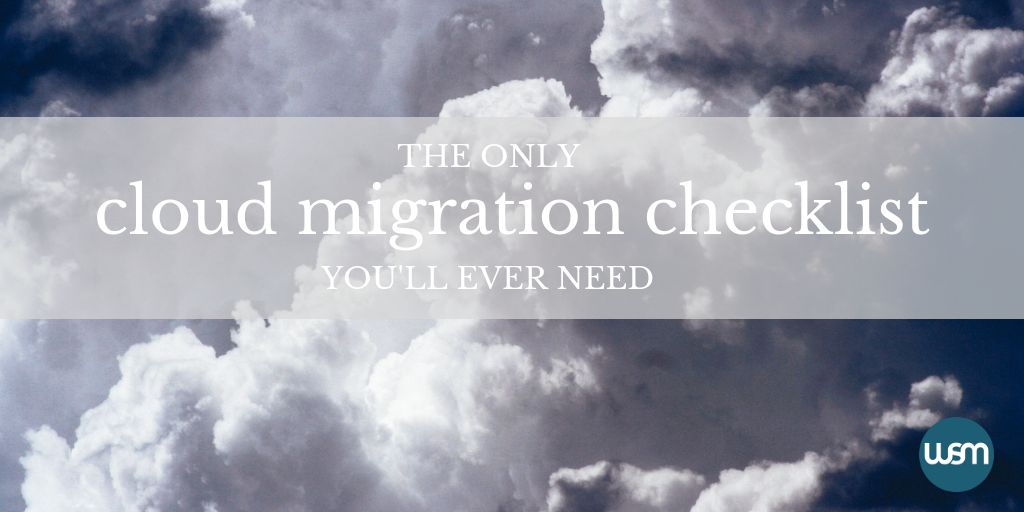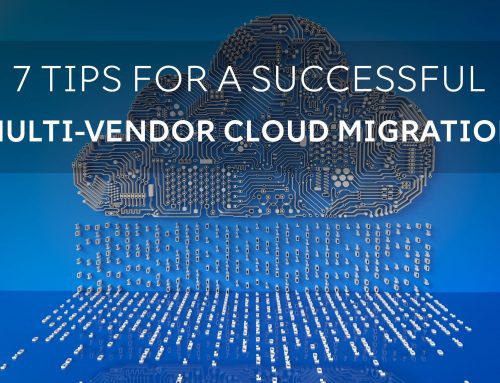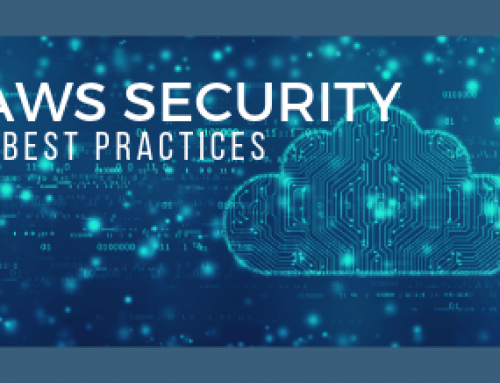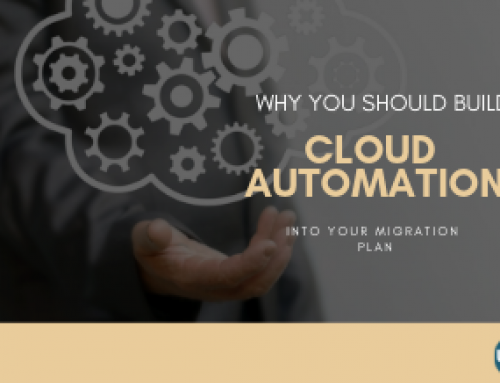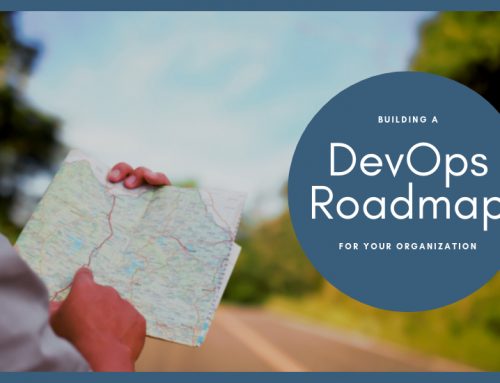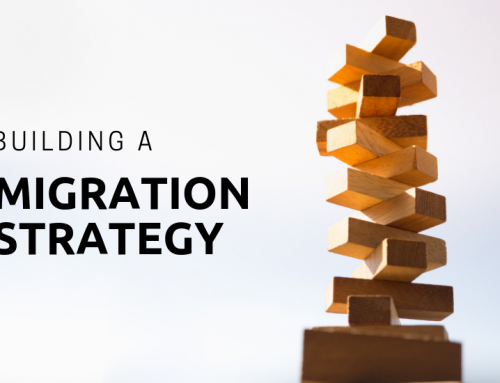With 83 percent of enterprise workloads estimated to be in the cloud by 2020, cloud migration is inevitable for most organizations. It’s not easy to navigate for most, and there’s a lot of planning and questions to address to ensure the smoothest migration path and best possible outcome. As a specialized migration provider who has performed thousands of migrations, we have compiled a cloud migration checklist to help guide you on your journey.
1. Assess: understand why your organization should migrate to the cloud
A migration is no small feat. We know because we’ve completed thousands of them. Knowing why your organization is migrating and the business value in doing so will ultimately make your cloud migration project more successful in the end. Start by assessing your current infrastructure, identify and prioritize workloads/applications that would be best served in the cloud, and start discussing how to align existing processes and procedures with the cloud.
Perhaps not every single workload or application of yours is perfect for the cloud. Or maybe an application would do well in the cloud and ultimately provide cost savings, but it should be refactored in order to provide that value. Participating in a Cloud Readiness Workshop is a great way to answer these questions and start the roadmap of your cloud journey.
Ask:
- Why does your organization want to move to the cloud?
- What type of resources, if any, and how much time are you willing to put forth to achieve your cloud migration goals?
- What would you like to automate, if anything?
- What needs to change at your organization to support cloud computing?
- What is a priority in the cloud? What would work best to move first and provide business value or ROI?
- What’s an acceptable level of risk?
- What security and compliance requirements do you have to meet?
2. Perform a thorough discovery exercise and consider security
Once you know that the cloud is right for your organization, performing a discovery exercise is important to moving forward with your cloud migration plan. Establishing a detailed inventory and dependency map of every server, application, and workload targeted for migration is imperative to building a solid migration plan and strategy. It may seem faster to skip this part or to perform discovery and then spend a lot of time assessing whether you should move to the cloud or not. This is not advisable, as you want to be working with as fresh of data as possible. In many cases you may identify servers/workloads that can be decommissioned during this exercise.
In addition, to kick-start your cloud migration process, you’ll need to figure out how the cloud will become an extension of your company’s IT (i.e. how you’ll connect to it from your office) and how you’ll handle security with that network connection in addition to other security concerns within the cloud. This could include monitoring, compliance, authentication, authorization, or other security measures that must be initiated within your new cloud environment.
To Do:
- Map dependencies of servers, applications, and workloads
- Inventory your servers, applications, and workloads, including details on versions, CPU, memory, load average, and disk usage
- Determine baseline current-state environment
- Understand how end-users use your applications
- Prepare a high-level migration plan and match the requirements for each workload category with the right platform and configuration
- Determine security measures that will ensure safe networking and connectivity with your office(s)
- Ensure your cloud architecture will meet compliance, authentication, authorization, monitoring, or other security guidelines within your company
Learn more about WSM’s migration discovery services and how we get your business ready for migration.
3. Develop Day 2 Operations and Governance Plans
To help take full advantage of your cloud environment following your migration, planning is required to maximize your Day 2 operations, the period following your migration were you’re optimizing and maintaining your environment.
Many cloud environments take advantage of DevOps to automatically manage their workloads post-migration. This could be as simple as ensuring the certain servers are shut down at certain times of day to decrease budget and improve performance, or more complex automation integrated with development tasks. Consider how automation will fit into your cloud environment and
In addition, governance falls under Day 2 operations and seeks to define your organization’s business requirements and how that relates to management in the cloud. Governance isn’t management of the cloud environment, but the guidelines, policies, and processes that control the environment. Designing a governance model that is a roadmap for your cloud consumption is necessary to set your organization up for cloud migration success.
To Do:
- Select which DevOps tools you want to use in your cloud environment
- Build a governance infrastructure before the migration
- Define the initial DevOps solution and links to the cloud platform
- Develop a DevOps stream within the cloud that includes automated performance testing
- Integrate containers into your DevOps and cloud strategy if it’s a good fit
4. Choose your cloud provider and level of cloud integration
There are lots of options when it comes to cloud providers. The key is to select the right one for your business needs. Some of the most popular providers include Amazon Web Services (AWS), Microsoft Azure, Google Cloud Platform, IBM Cloud, and Oracle Cloud. Review each one, as they do have their strengths and weaknesses.
If you’re managing the migration internally, then you’ll be dealing directly with the provider. However, your organization does run the risk of not having the right internal cloud engineering and migration expertise. One of the most common reasons for migration failures and delays is the complexity of the cloud adoption project, and lack of experience with executing on a mass migration. Having a partner that specializes in cloud adoption and transformation on your side, like WSM, can help make the process much smoother.
Once you know what cloud provider (or providers if you’re headed in the multi-cloud direction), next is to decide what level of cloud integration your application should have. There are two ways to migrate an application: lift and shift, where you make limited changes to the servers in the cloud for running the application; and deep cloud integration where you modify your application to take advantage of the cloud. Lift and shift is faster and cheaper, but can tend to be more expensive over time. The cloud is powerful and taking full advantage of its potential can help your applications run more efficiently. However, there is an upfront investment to deep cloud integration.
Finally, once you’ve chosen your target cloud providers, it’s time to architect the target cloud infrastructure, right size it for your environment, based on the discovery data in step 2 of this checklist, and estimate ongoing costs.
Ask:
- What matters most to me about our cloud provider?
- Will my provider deliver the level of service that I need, including the ability to scale and security?
- What are the actual costs involved for migration?
- What are the estimated monthly/annual costs involved for cloud infrastructure?
- What should move first?
- Does it make sense to lift and shift our applications or to integrate deeper into the cloud based on our goals?
5. Design the migration plan
You’ve identified the workloads to be migrated, chosen a cloud provider, have a target architecture prepared, and have a high-level migration plan out together. Now it’s time to really build out your migration strategy, detailing what is moving where and when it’s moving. Developing a runbook that explains the procedures and operations performed during the migration is helpful to many organizations.
There are many ways you can design a migration plan, including a migration at volume, phased migration, a migration factory, manual migration, or a combination in order to accomplish your project.
Think about:
- What will the disruption time be like?
- What should migrate first?
- What should the deadlines be and who will track the project?
6. Migrate
With everything prepared, it’s time to migrate! With a plan in hand and a team of experts behind you, you should be set up for a successful cloud migration. Usually, the easiest, least critical applications are migrated first, followed by more complex applications.
As part of the migration process, make sure you establish a contingency plan and ensure that there is ample time for testing and rollback. Hopefully, during the planning process, you identified the migration tools you’re going to use. It’s critical to maintain a high level of security during the migration. The right tools can help you do that.
To do:
- Establish a contingency plan
- Conduct thorough testing of the environment (make sure it works!)
- Conduct post-migration validation of applications and data
- Go-Live
Learn more about WSM’s cloud migration services and how we help organizations achieve their cloud migration goals.
7. Maintenance
Many organizations take advantage of fully managed cloud services to help maintain and support their cloud environments. Managed cloud services can help businesses take advantage of spend optimization, prevent downtime, and gain access to the latest technologies and best practices from a certified, expert team. Instead of burdening your internal team with cloud management, get a team of experts to do it for you.
Learn more about what managed cloud services can do for your organization on our blog.
Migrating to the cloud can be overwhelming. Deeply understanding your current environment and how that should translate to the cloud is difficult. Having a knowledgeable partner in your corner to guide you can make the process smoother and cut down on time to live. Check out WSM’s cloud migration process and learn more about how we can help guide you through your cloud migration project.


